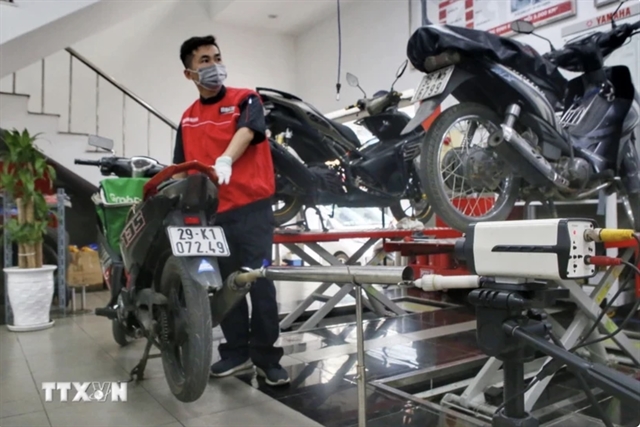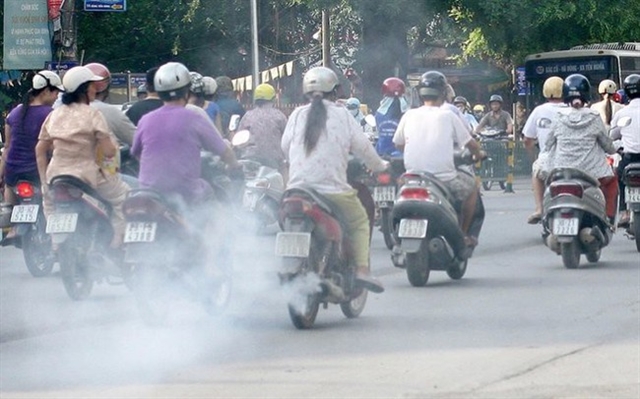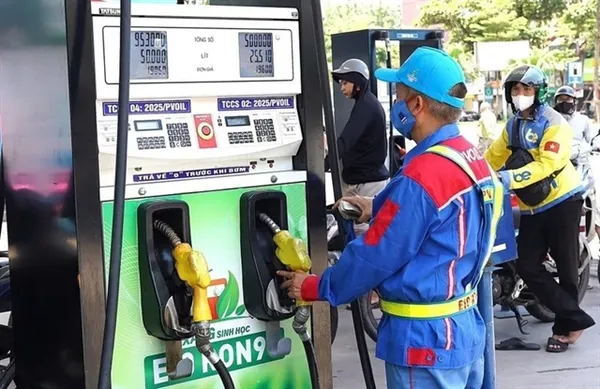 Society
Society

 |
| Under the current regulations, motorcycles and scooters manufactured within five years will be exempt from emissions inspections. Vehicles produced between five and 12 years ago will require emissions checks every two years, while those older than 12 years must undergo annual inspections. Photo chinhphu.vn |
HÀ NỘI - Motorcycles and scooters over five years old will eventually require periodic emissions inspections, but the implementation timeline for this initiative remains uncertain.
While the Ministry of Transport’s Circular 47/2024, effective January 1, 2025, outlines inspection regulations, the actual rollout will depend on the Environmental Protection Law, which is still awaiting amendments and approval from the Ministry of Natural Resources and Environment.
Under the current regulations, motorcycles and scooters manufactured within five years will be exempt from emissions inspections. Vehicles produced between five and 12 years ago will have to undergo emissions checks every two years, while annual inspections are compulsory for those older than 12 years. Certificates for emissions compliance will be issued electronically, linked to the vehicle owner's digital identity.
The procedures involve vehicle owners presenting valid documentation, such as registration certificates, at emissions testing centres. Inspectors will verify vehicle details against a centralised database, rejecting vehicles with discrepancies. Approved vehicles will receive digital emissions certificates integrated into national data systems.
The Ministry of Transport has prepared the necessary administrative framework, including rules for inspection and certification processes, to facilitate implementation once the roadmap is finalised. However, the Ministry of Natural Resources and Environment has not yet submitted the revised Environmental Protection Law, delaying the programme's start.
At a recent workshop on motorcycle safety, Khuất Việt Hùng, Director of the Institute for Transport Strategy and Development, highlighted the environmental and economic impact of controlling emissions from motorcycles. With over 73 million motorcycles accounting for 93 per cent of road vehicles in Việt Nam by the end of 2023, emissions from older motorcycles are a significant environmental concern. In major cities like Hà Nội, Hồ Chí Minh City and Đà Nẵng, motorcycles older than ten years constitute over half the total, contributing disproportionately to air pollution.
Data from emissions monitoring programmes in these cities show that motorcycles over five years old often exceed emissions standards, with vehicles over ten years old producing the highest emissions. For example, older motorcycles in Hà Nội account for 72.58 per cent of the total, compared to 68 per cent in Hồ Chí Minh City and over 59 per cent in Đà Nẵng.
Regular maintenance and emissions control measures could lead to substantial fuel savings and reduced environmental impact. A study estimates that adhering to maintenance schedules could save each motorcycle an average of 10.07 litres of fuel annually. For Hà Nội’s 6.1 million motorcycles, this equates to nearly 62 million litres of fuel saved annually, worth over VNĐ1.8 trillion (US$70.9 million). Additionally, controlling emissions could reduce CO emissions by 35.55 per cent and HC emissions by 40 per cent, improving urban air quality and public health.
As motorcycle use remains a primary mode of transport in Việt Nam, especially in urban areas, emissions control is a critical step toward sustainable development. While the challenges of implementing inspections for millions of vehicles are significant, experts stress the urgency of starting the program to avoid further delays that could complicate compliance efforts. VNS




